This story is part of a series, The Greatest Irish Olympic Stories Never Told, which will run every Saturday in The Irish Times up to the beginning of the 2024 Olympic Games, on Friday, July 26th
The Munich Olympics had been a disappointment for Fanahan McSweeney. By 1972, chronic hip injuries and back problems meant that he could only compete with the assistance of cortisone and pain killers.
Even so, he just failed to qualify for the 400m semi-finals by a hundredth of a second. Having decided not to hang around the Olympic Village, he rose early on September 5th to return to McNeese State University in Louisiana, where he was on an athletics scholarship.
In his memoir, Living and Loving with Cancer, published a few months before his death at just 47 in July 1995, McSweeney recalled what would be his brief moment of Olympic fame.
He had intended to climb the television tower and take some photographs. On the way, he spotted a figure in a balaclava with what could have been a gun on one of the balconies. He dismissed it as drunken revelry. But at the main gate of the village, he was confronted by banks of cameras and reporters.
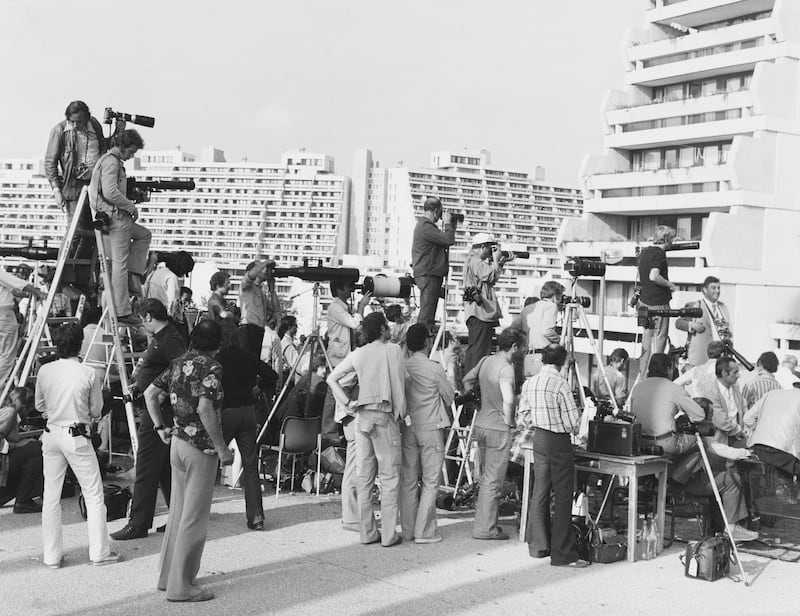
“Amid the babble of foreign accents, one American caught my attention: ‘Anything sinister happening in the Olympic Village?’
‘Everyone is fast asleep. Today is the athletes’ free day,’ I told him.
‘It’s very strange,’ he said. ‘All telecommunications into the village were severed at 2.30 this morning. There’s no official explanation.’
“My blood ran cold. I related what I had seen less than 30 minutes earlier. Unknowingly, I was giving the world its first inkling of the terrorist massacre of 14 Israeli athletes.”
His friend, RTÉ commentator Ger Canning, remembers McSweeney telling him: “When I went back to America, I had so many people on to me saying they had seen me on the television. Nobody asked me about the races.”
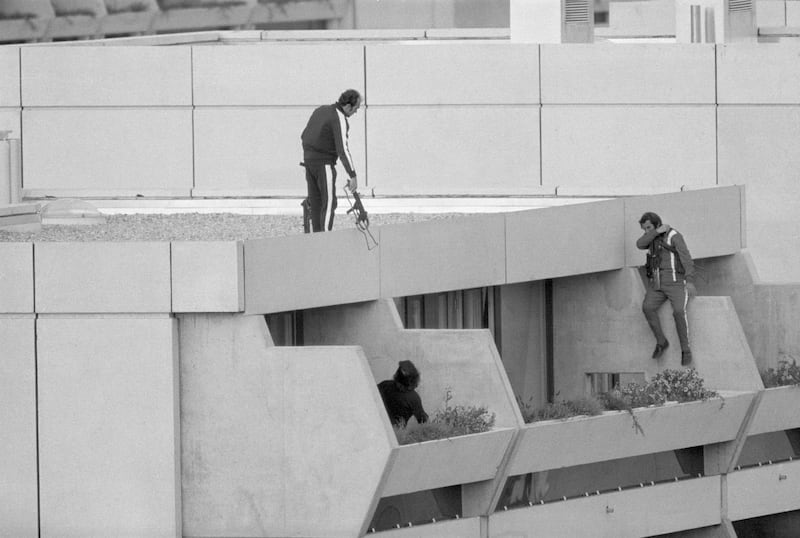
If you check the McNeese Hall of Fame, you’ll find McSweeney there, described as “the fastest of the fast”. His discipline was sprinting and he held European records at 400m and its imperial equivalent 440 yards, going unbeaten for seven years in one-day international events.
A year after his death, the Fanahan McSweeney Athletic Club was founded in Mitchelstown.
Eamonn Coghlan’s career took off just as McSweeney’s was finishing but there was an overlap when the pair of them were regularly Ireland’s only winners at meetings. They became friends.
“He was one of the greatest Irish athletes of all time,” according to Coghlan, “who simply wasn’t able to fulfil his potential because of injury. He was just a natural born runner and had a tremendous attitude.”
That injury, which he attributed to a wallop he got playing hurling, plagued his athletics career and later morphed into something more sinister. At the 1971 European Championships in Helsinki, the pain in his hip and back was so bad that he had to be stretchered off the plane on arrival.
Typically, within a couple of days, he was up and contesting the heats, reaching the semi-finals.
“He was an amazing character,” says Canning, “probably the most remarkable person I’ve come across in my life, a Renaissance-type figure. A top athlete, an engineer, an inventor, a very good musician who played the accordion.”
♦◊♦◊♦◊♦◊♦◊♦◊♦◊♦◊♦◊♦
Fanahan McSweeney was brought up in Castletownroche, Co Cork. He was studious at school and his early sporting inclination was hurling. He was a panellist with the team that won the county intermediate title in 1964. The same year, the club retained the first under-21 divisional title won in 1963.
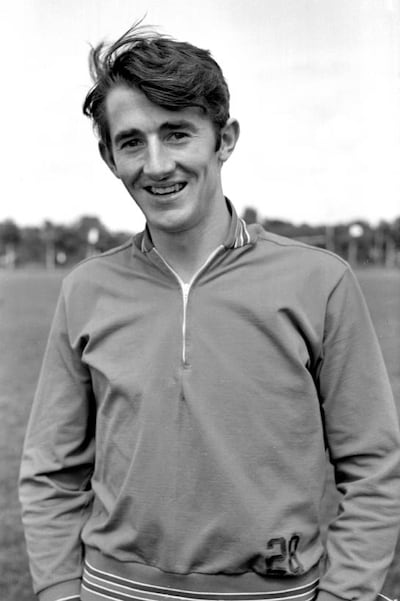
He played centrefield for both of those teams
“The final was against Buttevant with the game played in Doneraile and saw Castletown’ record a big win by 5-8 to 1-5, having led at the break 2-5 to 0-1. Their success stemmed from the steady midfield play of Avondhu hurler Seán Murphy and Fanahan McSweeney,” according to a retrospective account published in the Avondhu in 2021.
Secretary Bobby Hazelwood says that the McSweeney family were very involved with the club.
“Fanahan was called to Cork underage trials but by then athletics was beginning to take over. His brother Kevin won under-21 All-Irelands with Cork in 1970 and ‘71.”
Canning recalls that a teenaged McSweeney made a big impact locally.
“The late Noel Carroll [a European indoor medallist] was a guest at the Cork City sports and about to get married. It was agreed that the prize would be a lawnmower. Noel turned up and Fanahan, who was an unknown, took him on. The joke around Cork was that he nearly left Noel Carroll with the hedge clippers, which was the second prize.”
In 1968 he shattered a range of Irish records at 200m and 400m as well as their imperial equivalents, 220 and 440 yards.
He was one of my great mentors and even went as far as building my house when I moved back from America
— Eamonn Coghlan on Fanahan McSweeney
It was RTÉ’s Brendan O’Reilly, a former athlete himself, who came up with the idea of applying to the US universities for a scholarship. From a shortlist, McSweeney chose McNeese at least partly because he was enthused by head coach Bob Hayes, an Olympic sprint gold medallist.
On arrival in Louisiana in 1970, he discovered that there was another Bob Hayes, who had no gold medals.
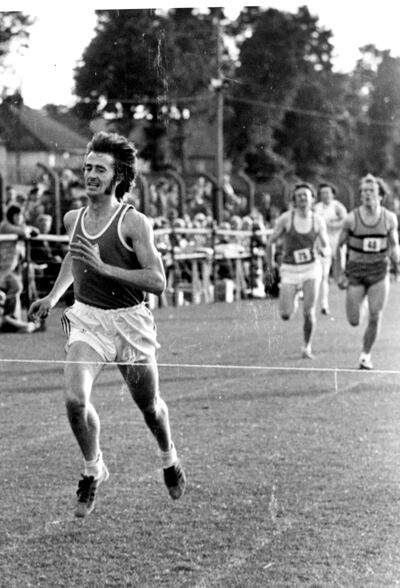
The new enrolment from Cork was warned that no student on a track scholarship had ever graduated in civil engineering, but there’s always a first. His hip problem unfortunately manifested immediately – diagnosed as nerve damage emanating from the vertebrae – and he had to secure a derogation from racing in his first year.
Thereafter he operated on a revolutionary regimen of “little or no training and plenty of rest”. It paid off, as he broke records and set new ones, coming second in the US national indoor championships at 440 yards.
Some years later in 1991, he even received the citation “Cajun Sportsman of the Century”, awarded by sportswriters and broadcasters in the French/Cajun speaking regions of the southern US states.
Summarising, Ray Valdatero said: “The athlete that held college records in South Louisiana from 100 yards to the mile is the unanimous choice for Athlete of the Century, even though McSweeney himself is not a native Cajun.”
Unfortunately, as soon as he resumed heavy training in order to pursue an international career, his body rebelled.
Coghlan says that it never appeared to depress or embitter his friend that his potential had been so undermined.
“It certainly stopped him fulfilling his full potential but Fanahan saw life beyond athletics. He was a great student and an engineer.
“He was one of my great mentors and even went as far as building my house when I moved back from America.
“He came up to see the site and said, ‘Coghlan, boy, if you buy that site, I’ll build a house on it for you’. Years later when I showed him the plans, his reaction was, ‘Jeez, that looks like three bungalows slapped together. You’ve got to build something that when Sebastian Coe, Steve Ovett and Edwin Moses come to visit, they’ll say, ‘By Jesus, didn’t Coghlan do well for himself!’
“He looked after me by taking on the building of our house as project manager and engineer. He drove up every week and halfway there and halfway home, he had to pull in and rest the back.”
McSweeney had returned to Ireland after graduation and was appointed resident engineer for the Cork Regional Hospital project.
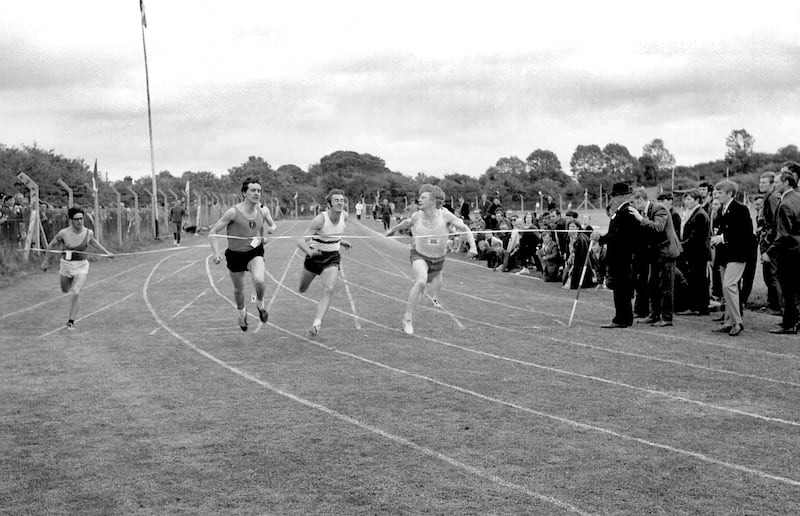
“He was very ambitious and had great entrepreneurial skills,” says Coghlan. “He designed the ‘Fanahan chimney’ and expected that he’d make his fortune and some company would buy it off him.”
The idea of capturing heat from chimneys and recycling it as domestic heating was taken as far as a patent. “Megabucks beckoned,” he wrote, “but Fate had other ideas.”
♦◊♦◊♦◊♦◊♦◊♦◊♦◊♦◊♦◊♦
The premise of Living and Loving with Cancer is self-explanatory. In an interview published in these pages in December 1994, Dermot Gilleece describes the book as “an amazing piece of work, beautifully written and vibrant with love, despair, pain and humour, indeed every conceivable emotion”.
It takes the reader through his cancer diagnosis – in the very hospital whose construction he had supervised – and the attrition of the treatment. In this war zone of chemo, half-glimpsed rays of hope and more frequent black cloudbursts of despair, he falls in love with Jean, whom he previously knew and who marries him, fully cognisant of the prognosis.
His old friend Fr Andy Sheehan counsels and comforts after the diagnosis but, during the treatment struggles, the priest, almost unbelievably, is himself struck down with cancer and dies before the book ends.
“Fr Andy Sheehan was parish priest in Drimnagh,” remembers Coghlan, “and knew my family well. He was in with Fanahan every day. But he couldn’t deal with his own illness. Remarkably he was helping Fanahan but when diagnosed, he really struggled to come to terms with it. Fanahan ended up comforting him.”
It sounds like a grim read but there is such a spirit of hopefulness and a determination to make the best out of what time he has left that it ultimately becomes uplifting.
He and Jean have two boys, Andy and Fanahan Beag – heartbreakingly young at two and four when their dad dies but the ferocious love for family illuminates the remainder of his days.
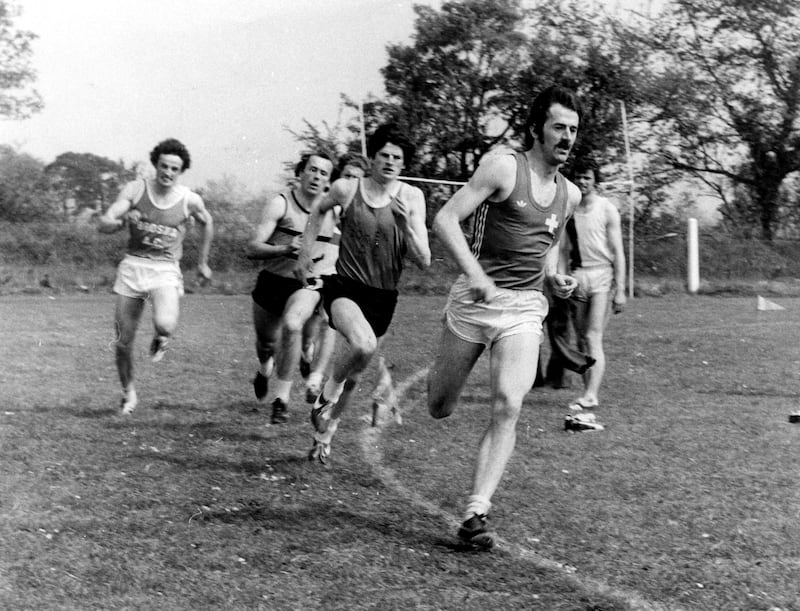
There are other setbacks. In a sharp contemplation on “the cruelty of the outside world where the ‘healthy’ reside,” McSweeney discovers that among the piles of letters that accumulate during his lengthy visits to hospital for unimaginably difficult treatments, is one telling him his patent – which he hoped would bring in a fortune – has lapsed because he omitted to pay for its renewal.
Golf plays a role in his normality. On the small course previously attached to Cork’s Silver Springs Hotel, Coghlan is advised, “Get a six-inch rod fused to your spine and that will slow your swing down”.
There is tutelage for a group of friends including Canning (known as “The Squirrels” because of the danger their errant shots pose to the animals) who also regularly play the course and become a society to raise funds for cancer.
The end comes shortly after the Coghlan family have returned from holidays in France. An earlier phone call had been uncharacteristically downbeat.
“It was the first time he was in any way negative about it all. I went straight down to see him when I got back from France. He died a couple of days later. It was very quick in the end.”
Canning, a neighbour for the last 10 years of McSweeney’s life, reflects on his friend.
“He’s a guy I still think about every day. I greatly admired him.”










